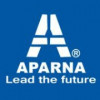
i
Kalpataru Group
Filter interviews by
Kalpataru Group Senior Civil Engineer Interview Questions, Process, and Tips
Kalpataru Group Senior Civil Engineer Interview Experiences
2 interviews found
I applied via Naukri.com and was interviewed in Jan 2023. There were 2 interview rounds.

(5 Questions)
- Q1. Aluminium (mivan) structure sequence of activities?
- Ans.
The sequence of activities for aluminium (mivan) structure construction involves several steps.
Preparing the site and marking the layout
Constructing the foundation and footings
Erecting the aluminium formwork panels
Fixing reinforcement bars and embedment items
Pouring concrete into the formwork
Curing the concrete
Stripping the formwork
Finishing and cleaning the structure
- Q2. Finishing worksequence of activities?
- Ans.
The finishing work sequence of activities involves the final steps in a construction project to complete the project and prepare it for use.
Inspecting and correcting any defects or deficiencies
Installing finishes such as flooring, paint, and fixtures
Completing final electrical and plumbing work
Cleaning and tidying up the site
Obtaining necessary permits and certifications
Conducting final inspections
Handing over the comp
- Q3. Water proofing ponding test hours?
- Ans.
Waterproofing ponding test hours determine the duration for which a waterproofing system can withstand water ponding.
Waterproofing ponding test hours measure the ability of a waterproofing system to resist water penetration under prolonged ponding conditions.
The test involves subjecting the waterproofing system to a specified water depth for a certain duration.
The duration of the test can vary depending on the project ...
- Q4. How much accepted 8mm to 10mm steel rod rolling margine value ?
- Ans.
The accepted rolling margin value for 8mm to 10mm steel rods varies depending on the specific project requirements and industry standards.
The accepted rolling margin value can range from 2% to 5%.
It is important to consult project specifications and industry guidelines for the specific rolling margin value.
For example, if the rolling margin value is set at 3%, a 10mm steel rod could have a diameter between 9.7mm and 10...
- Q5. Unit Weight of Steel?
- Ans.
The unit weight of steel refers to the weight of a given volume of steel material.
The unit weight of steel is typically measured in pounds per cubic foot or kilograms per cubic meter.
The specific unit weight of steel can vary depending on the type and grade of steel being used.
For example, the unit weight of structural steel is around 490 pounds per cubic foot or 7850 kilograms per cubic meter.
The unit weight of reinfo...
Interview Preparation Tips
2) Don't do over thinking.
I applied via Walk-in and was interviewed before Jun 2023. There were 2 interview rounds.
(1 Question)
- Q1. Tell me about yourself
(2 Questions)
- Q1. Cutting length of beam
- Ans.
Cutting length of a beam is the total length of the beam including the extra length required for bending and overlapping reinforcement.
Cutting length is calculated by adding the clear span of the beam to the development length of the reinforcement on both sides.
Extra length is added for bending and overlapping reinforcement to ensure proper strength and stability.
Proper calculation of cutting length is crucial for the ...
- Q2. Lapping zone in columns & beams
- Ans.
Lapping zone in columns & beams refers to the overlapping area where two reinforcement bars are spliced together.
Lapping zone is typically located at the mid-height of the column or beam.
It is important to ensure proper lapping length and overlap to maintain structural integrity.
Lapping zone should be free from rust, oil, grease, or any other contaminants.
Proper anchorage length should be provided to prevent failure at...
Interview Preparation Tips
Top trending discussions






Interview questions from similar companies

I applied via Walk-in and was interviewed in May 2024. There were 3 interview rounds.
(6 Questions)
- Q1. How many Concrete blocks is required for 100sft ?
- Ans.
The number of concrete blocks required for 100sft depends on the size of the blocks and the thickness of the wall being built.
The number of concrete blocks needed can be calculated by dividing the total area (100sft) by the area of one block.
The size of the concrete block and the thickness of the wall will determine the number of blocks needed.
For example, if each concrete block is 1ft x 1ft and the wall is 4 inches th
- Q2. What is Concrete density?
- Ans.
Concrete density is the mass per unit volume of concrete.
Concrete density is typically measured in kilograms per cubic meter (kg/m^3).
The density of normal concrete is around 2400 kg/m^3.
Higher density concrete, such as heavyweight concrete, can have densities up to 4000 kg/m^3.
Lightweight concrete, on the other hand, can have densities as low as 1600 kg/m^3.
- Q3. What is thickness for outer & inner walls Plastering?
- Ans.
The thickness for outer and inner walls plastering typically ranges from 12mm to 20mm.
The thickness of plastering for outer walls is usually around 15mm to 20mm.
The thickness of plastering for inner walls is typically around 12mm to 15mm.
The thickness may vary based on the type of wall surface and the desired finish.
It is important to ensure proper curing and finishing for a durable and aesthetically pleasing result.
- Q4. Which formwork is used in all ur recently worked companies ?
- Ans.
Various types of formwork have been used in my recently worked companies, including timber formwork, steel formwork, and aluminum formwork.
Timber formwork is commonly used for small to medium-sized projects due to its cost-effectiveness and flexibility.
Steel formwork is preferred for large and complex structures due to its durability and reusability.
Aluminum formwork is lightweight and easy to handle, making it suitabl
- Q5. What is the mix proportion of Plastering mortar?
- Ans.
The mix proportion of plastering mortar typically consists of 1 part cement to 3-4 parts sand.
The mix proportion of plastering mortar is usually 1:3 or 1:4 (cement:sand)
The mix can also include lime to improve workability and durability
Water is added to achieve the desired consistency for application
Example: A common mix proportion for plastering mortar is 1 part cement, 3 parts sand, and water as needed
- Q6. How many materials required in 1m3 Plastering mortar?
- Ans.
The materials required in 1m3 of plastering mortar include cement, sand, and water.
Cement is typically used in the ratio of 1:4 for plastering mortar.
Sand is used in the ratio of 3-4 times the amount of cement used.
Water is added as needed to achieve the desired consistency.
For example, for 1m3 of plastering mortar, you may need 0.25m3 of cement, 1m3 of sand, and water as needed.
Test was based on numerical, reasoning and verbal,Geometry,Profit & loss, Algebra, Simplication, trigonometry,Load calculation,etc
(5 Questions)
- Q1. What are the roles & responsible in Recently worked company ?
- Q2. They are analysing that Engineers are good consistency for their project work ?
- Q3. Are you able to work in other states & countries ?
- Q4. Will you able to work for 1-3 for our Sobha ltd company so you have to give ur contribution for gaining knowledge in Civil engineering technical world & to growth company also ?
- Ans.
Yes, I am willing to work for 1-3 years at Sobha Ltd to contribute to the growth of the company and gain knowledge in the technical world of Civil engineering.
I am committed to continuous learning and professional development in the field of Civil engineering.
I understand the importance of gaining practical experience and knowledge to contribute effectively to the growth of the company.
I am excited about the opportunit...
- Q5. What are the designation in ur recently worked companies ?
Interview Preparation Tips
- Civil engineering interview ques
- User Experience
- Labour Management
- According to drawing
- Civil engineering laws & code
- Read Is standards

I applied via Walk-in and was interviewed in Oct 2024. There were 2 interview rounds.
(2 Questions)
- Q1. BBS Mivan Shuttering
- Q2. Regarding projects handled
(2 Questions)
- Q1. Are you ready to work for 12 hours a day?
- Q2. Are you ready to work at night also?
- Ans.
Yes, I am ready to work at night as required for the job.
I am willing to work night shifts to meet project deadlines
I understand the importance of flexibility in the engineering field
I have previous experience working night shifts on construction projects
Interview Preparation Tips

Senior Civil Engineer Interview Questions & Answers
Cushman & Wakefieldposted on 24 Aug 2024
(1 Question)
- Q1. About your self

Senior Civil Engineer Interview Questions & Answers
Aparna Constructions and Estatesposted on 20 Oct 2024
I was interviewed before Oct 2023.
(1 Question)
- Q1. MD sir asked waterproofing related questions asked for terrace podium,balconies, toilets, sitouts etc...

Senior Civil Engineer Interview Questions & Answers
Aparna Constructions and Estatesposted on 27 Nov 2023

(1 Question)
- Q1. Shuttering using steel bbs high rise building similar questions
(1 Question)
- Q1. How much you expected salary and how many days working period
- Ans.
I expect a competitive salary based on my experience and qualifications. As for the working period, I am open to discussing and negotiating the number of days.
I am looking for a salary that reflects my expertise and the responsibilities of the senior civil engineer role.
I am open to discussing the salary range during the interview process.
Regarding the working period, I am flexible and willing to negotiate the number o...
Interview Preparation Tips

Senior Civil Engineer Interview Questions & Answers
Aparna Constructions and Estatesposted on 2 Jul 2023
I applied via Job Portal

(1 Question)
- Q1. Basics questions regarding slabs, areas, concreting
(2 Questions)
- Q1. Again they did technical round, I don't understand that, why the hr do technical round
- Q2. They asked how many experience, floor like silly questions
Interview Preparation Tips

I applied via Referral and was interviewed in Jan 2023. There were 2 interview rounds.

(2 Questions)
- Q1. Earlier projects done
- Ans.
I have worked on various civil engineering projects including construction of highways, bridges, and buildings.
Managed the construction of a 10 km highway project, ensuring timely completion and adherence to safety standards
Designed and supervised the construction of a 5-story commercial building, ensuring structural integrity and compliance with local regulations
Led a team of engineers in the construction of a pedestr...
- Q2. Which aggregate test done
- Ans.
Various tests are done on aggregates, including sieve analysis, specific gravity, and absorption.
Sieve analysis determines the particle size distribution of the aggregate.
Specific gravity test measures the density of the aggregate compared to water.
Absorption test determines the amount of water absorbed by the aggregate.
Other tests include soundness test, crushing value test, and impact value test.
The results of these ...
Interview Preparation Tips

Senior Civil Engineer Interview Questions & Answers
Aparna Constructions and Estatesposted on 19 Aug 2022
(1 Question)
- Q1. Civil Technical questions
(1 Question)
- Q1. Salary discussion and Negotiate
(1 Question)
- Q1. Past experience why select Our Organization
Interview Preparation Tips
Kalpataru Group Interview FAQs
Tell us how to improve this page.
Kalpataru Group Interviews By Designations
- Kalpataru Group Assistant Engineer Interview Questions
- Kalpataru Group Senior Engineer Interview Questions
- Kalpataru Group Assistant General Manager Interview Questions
- Kalpataru Group Executive Interview Questions
- Kalpataru Group Management Trainee Interview Questions
- Kalpataru Group Senior Civil Engineer Interview Questions
- Kalpataru Group Accounts Manager Interview Questions
- Kalpataru Group Accounts Officer Interview Questions
- Show more
Interview Questions for Popular Designations
- Civil Site Engineer Interview Questions
- Civil Engineer Interview Questions
- Junior Engineer Civil Interview Questions
- Project Engineer - Civil Interview Questions
- Assistant Engineer - Civil Interview Questions
- Civil Foreman Interview Questions
- Civil Supervisor Interview Questions
- Diploma Civil Engineer Interview Questions
- Show more
People are getting interviews through
Senior Civil Engineer Interview Questions from Similar Companies
Fast track your campus placements
Kalpataru Group Senior Civil Engineer Reviews and Ratings
based on 4 reviews
Rating in categories
|
Assistant Manager
232
salaries
| ₹5.4 L/yr - ₹16 L/yr |
|
Senior Engineer
156
salaries
| ₹3.2 L/yr - ₹12.5 L/yr |
|
Assistant Engineer
103
salaries
| ₹3.1 L/yr - ₹8.5 L/yr |
|
Senior Executive
93
salaries
| ₹4.5 L/yr - ₹10 L/yr |
|
Manager
86
salaries
| ₹10 L/yr - ₹24 L/yr |

Tata Group

Adani Group

Reliance Industries

Mahindra & Mahindra
Calculate your in-hand salary
- Home >
- Interviews >
- Kalpataru Group Interview Questions >
- Kalpataru Group Senior Civil Engineer Interview Questions





